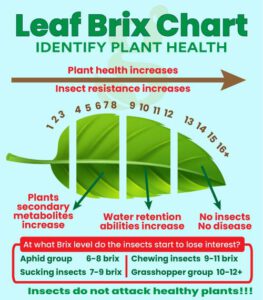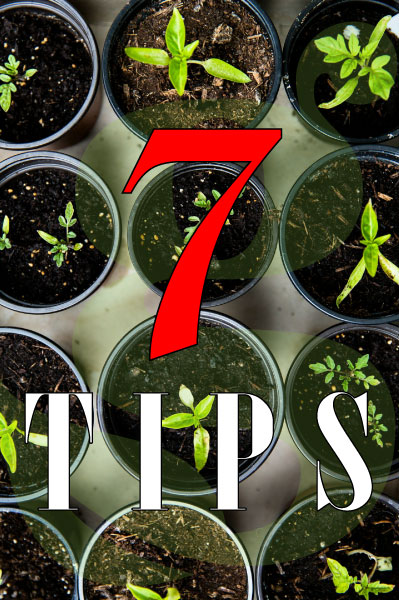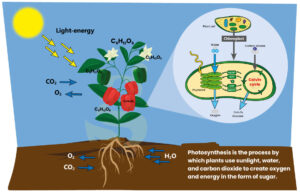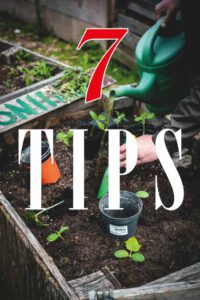
Brix in relation to crop health and quality
Brix in relatie tot gezondheid en kwaliteit van gewassen. De zoete wetenschap van Brix. Brix in relatie tot gezondheid en kwaliteit van gewassen. Brix-waarde verwijst
More yield from better quality
All in just 5 products
25+ years of fertilizer experience
Better and cheaper
Easy to use

Creating a successful indoor grow involves more than just light and water. Here are 7 tips to boost your indoor garden.
Check for yourself what you need to put together the optimal set-up for you. Also consider equipment that allows you to manipulate environmental factors and instruments for measuring temperature, humidity, TDS and pH. Purchase products of solid quality. Go for reliable and efficient tools and supplies. Quality products contribute to better health, growth and overall success of your indoor garden. Quality products come in various price ranges. Realise that the most expensive are not always the best. With electronics, they often are. With fertilisers, actually never.
A clean environment minimises the risk of pests and diseases. Clean and disinfect your garden tools, pots and trays regularly. Remove debris and dead plant material immediately to minimise the risk of mould and pests. A clean and well-organised growing space also makes it easier to monitor and care for your plants.
Increase your knowledge by keeping detailed records of activities in your indoor garden. Keep track of planting dates, watering schedules, fertilisation routines and any problems or successes you notice. A grow diary will help you recognise patterns, learn from experiences and make informed adjustments to optimise your growing practices.
For optimal cultivation, use the growing method that is ideal for you. A popular choice for beginner and advanced growers is potting soil or coco. But hydroponic growing systems, with nutrient-rich solutions, are also effective for precise control of nutrient uptake. However, these methods usually require more growing experience. Delve into the various options with all their pros and cons.
Plants need nutrients because, depending on the substrate chosen, there is little or no nutrient presence. Use a balanced, water-soluble fertiliser. You have a choice of organic and inorganic fertilisers. Our preference is for a hybrid system. A mix of mineral and organic. Many growers achieve the best high-quality results with this. Follow the instructions of the chosen product. The instructions are recommendations that are often a golden mean. Before use, always measure whether your feed water has the right pH and EC values.
Check your plants regularly for signs of pests, diseases or nutrient deficiency. Implement preventive measures such as introducing beneficial insects, using neem oil or insecticidal soap. Be sure to provide the right nutrients before problems such as deficiencies or over-fertilisation start occurring. Early detection and proactive solutions can save your plants from significant damage. Remove dead or yellowed leaves to encourage new growth. But also learn to 'read' your plants. By monitoring your plants, you can see, among other things, whether they need certain nutrients. But also whether you can 'push' your plants further to achieve an even better result. Many factors can make adjustments necessary or desirable. Partly for this reason, keeping a cultivation diary is a good routine.
Ensure constant temperature and humidity levels within the appropriate range for your plants. Sudden temperature fluctuations or extremes can stress plants. Use a thermometer and hygrometer to monitor these conditions and consider moving temperature-sensitive plants away from draughts and heating or cooling vents. Good air circulation is essential to prevent the growth of mould, mildew and pests. Use fans to provide a gentle breeze that promotes strong and healthy plant development. This is especially important in rooms with limited space. The importance of maintaining optimal environmental conditions is often underestimated. These largely determine the ultimate success of the crop.
These tips highlight the importance of dedication, observation and investing in the right resources for a successful indoor gardening experience. By combining these practices, you will be well on your way to creating a thriving and rewarding indoor garden. Remember that each plant has its own unique needs. So it is essential to understand the specific requirements of each species you grow. Indoor gardening requires a bit of experimentation as conditions can vary depending on factors such as room temperature, humidity and the specific needs of your plant species. Regular attention and adjustments contribute to understanding and managing a thriving indoor garden. In addition, consistency and dedication is key to maintaining a successful indoor garden. So try to establish a routine that works for both you and your plants.

Brix in relatie tot gezondheid en kwaliteit van gewassen. De zoete wetenschap van Brix. Brix in relatie tot gezondheid en kwaliteit van gewassen. Brix-waarde verwijst

Het endocannabinoïde systeem begrijpen Een korte handleiding voor CB1- en CB2-receptoren Het endocannabinoïde systeem (ECS) speelt een fundamentele rol bij het reguleren van verschillende fysiologische

Photosynthesis Photosynthesis is the process by which green plants, algae and some bacteria convert light energy into energy in the form of glucose. This process mainly takes place

7 handy tips to prepare for the new garden season Gardening tasks when the spring jitters strike: Spring is a time of renewal and

The development of hydroponic fertilisers through the ages The history of hydroponics is a story of innovation and perseverance, rooted in the quest of the

Transforming urban heat islands into cool and livable cities The power of harnessing greenery for cooler cities As urbanisation increases, cities are struggling over
Brix in relatie tot gezondheid en kwaliteit van gewassen. De zoete wetenschap van Brix. Brix in relatie tot gezondheid en kwaliteit van gewassen. Brix-waarde verwijst
Het endocannabinoïde systeem begrijpen Een korte handleiding voor CB1- en CB2-receptoren Het endocannabinoïde systeem (ECS) speelt een fundamentele rol bij het reguleren van verschillende fysiologische
Photosynthesis Photosynthesis is the process by which green plants, algae and some bacteria convert light energy into energy in the form of glucose. This process mainly takes place
7 handy tips to prepare for the new garden season Gardening tasks when the spring jitters strike: Spring is a time of renewal and
The development of hydroponic fertilisers through the ages The history of hydroponics is a story of innovation and perseverance, rooted in the quest of the
Creating a successful indoor grow involves more than just light and water. Here are 7 tips to boost your indoor garden.
Home » 7 tips for your indoor growing - Genoneeleven

Because growing your own is a craft. It takes time, energy, focus, attention, maybe even love. At your own pace, in your own environment. You are the creator.